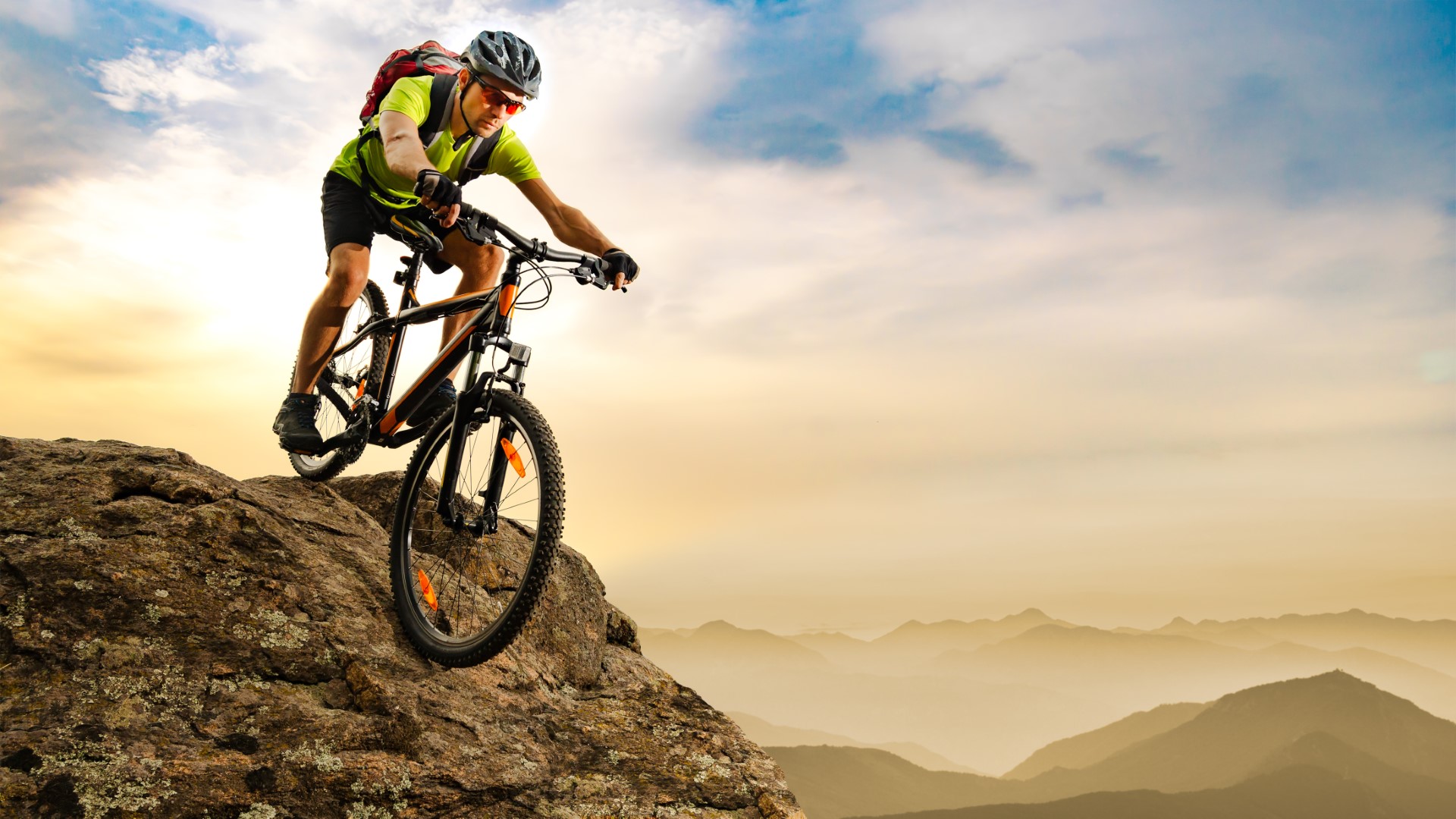


Is mountain biking hard? This question often comes up when people think about entering the world of mountain biking. Mountain biking offers a fun and adventurous way to connect with nature, explore trails, and challenge yourself physically and mentally. While this can be a physically demanding activity, the level of difficulty depends on several factors.
Read More : ” Which Cycle Is Best Fat Bike Or MTB? “
For beginners, mountain biking can be intimidating, especially over difficult terrain and steep hills. But with the right approach, patience, and practice, it can be rewarding and fun. Developing basic skills such as balancing, sliding, and mastering braking techniques is the key to building confidence on the track.
The level of difficulty also varies depending on the type of mountain bike, such as cross-country, downhill, or enduro. Each discipline requires specific skills and methods to suit different interests and preferences.
Regardless of style, mountain biking provides a great workout, helps you gain strength, improves your cardiovascular system, and builds mental resilience.
In this article, we’ll look at the aspects that can make mountain biking difficult by learning strategies to overcome these obstacles and experience exhilarating outdoor rides. So, let’s get ready and dive into the world of mountain biking!
Related: Is it hard to ride a mountain bike on the road.
The Thrill of the Trails: Exploring the World of Mountain Biking
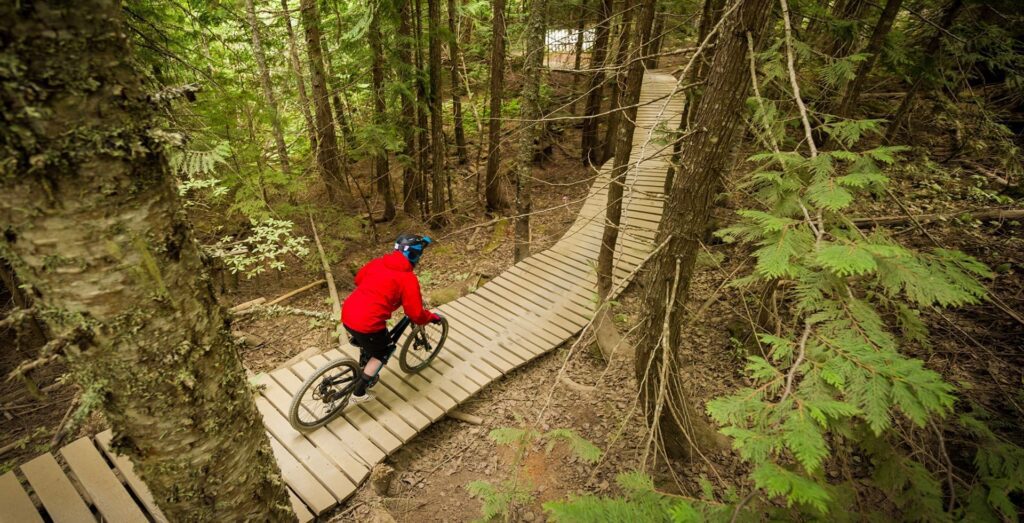


Welcome to the exciting world of mountain biking, where adventure and adrenaline go hand in hand. Seeing nature as a playground and rough terrain as a challenge, mountain biking provides an extraordinary thrill for nature lovers.
Whether you’re a seasoned rider or a curious novice, the trail invites you to explore its rugged beauty. From winding single tracks to steep descents, each trail promises to be a unique experience. So get ready, enjoy the wilderness, and have an unforgettable journey in the mountains.
Let’s dive into the throbbing heart of mountain biking!
- Adrenaline Rush:
Mountain biking is an exhilarating experience as you navigate rough terrain full of bends, turns, and obstacles that test riders’ skills and courage.
- Stunning natural beauty:
From majestic mountain landscapes to tranquil forest trails, mountain biking offers an unprecedented opportunity to connect with nature and immerse yourself in stunning scenery.,
- Physical and Mental Challenges:
Off-road driving requires physical strength, endurance, and mental focus, making it an enjoyable and rewarding exercise for the body and mind.
- Sense of Achievement:
Overcoming rough roads and overcoming obstacles brings a sense of accomplishment and confidence, boosting overall driver morale.
- An escape from everyday life:
Mountain biking allows you to escape the hustle and bustle of city life and immerse yourself in the serenity of nature and the outdoors.
- Community and Friendship:
The mountain bike community develops a sense of camaraderie as riders come together through experiences and support each other on the trail.
- Versatility and Accessibility:
With a variety of trail options to suit all skill levels, mountain biking welcomes beginners and experienced riders alike, making it an inclusive and accessible sport.
- Unforgettable adventures:
Each course offers unique challenges and surprises that make every mountain bike ride an unforgettable and exciting adventure.
Get ready for an exciting journey into the world of mountain biking. Combining excitement, natural beauty, and personal growth, mountain biking promises to be an unforgettable experience. Whether you’re a seasoned runner seeking thrills or a beginner seeking new passions, the thrill of the track awaits!
Are you ready for the challenge? Let the adventure begin!
Related: Can you ride a mountain bike on the beach
Breaking Down the Difficulty: Is Mountain Biking Hard for Beginners?
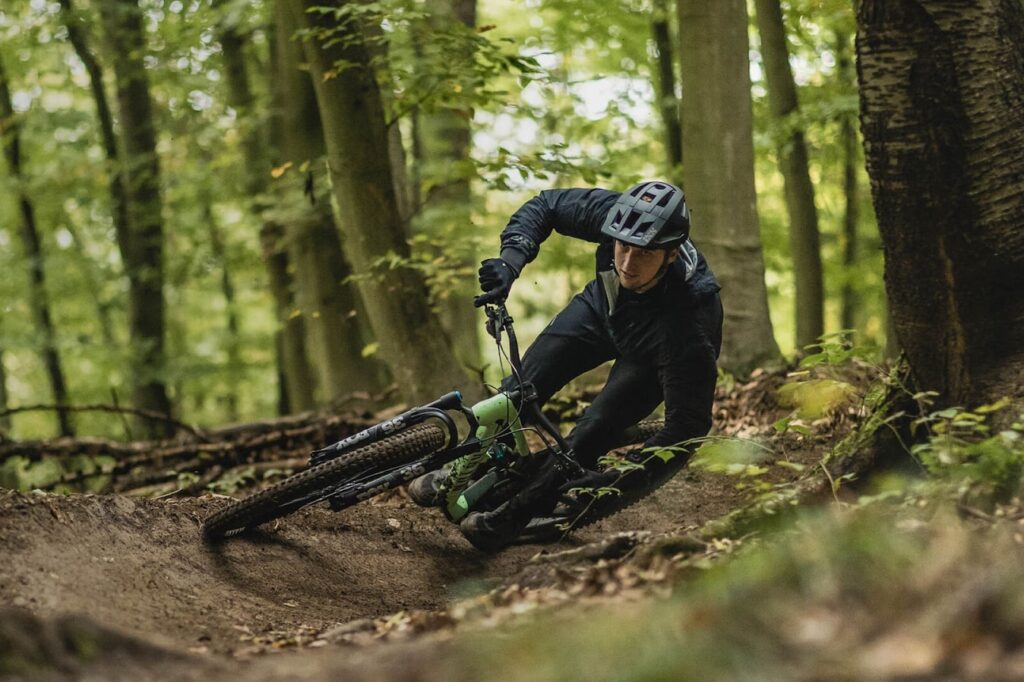


Mountain biking, with its excitement and adventure, may seem intimidating to beginners, but fear not! Let’s take a look at the challenges and rewards for newcomers to the sport:
- Learning curve:
Like any new skill, mountain biking has a learning curve. Beginners may have difficulty mastering the technique, but with practice, skills develop rapidly.
- Choosing a slope:
It is very important to choose a slope suitable for beginners. Choose an easy, well-marked route to build confidence, and gradually work your way up to more difficult routes.
- Fitness Level:
Mountain biking requires physical activity, especially on hikes. However, with regular cycling, beginners can increase their stamina and stamina.
- Put safety first:
Emphasize safety by wearing protective gear like helmets and knee pads. Learning proper cycling techniques and overcoming obstacles increases lane safety.
- Community Support:
The mountain bike community is welcoming and supportive. Join a local club or group trip for valuable information and support from experienced drivers.
- Psychological Resilience:
Overcoming initial fears and challenges builds psychological resilience. Building confidence through small wins increases motivation to take more challenging courses.
- Enjoying nature:
Mountain biking provides an opportunity to explore natural landscapes and reconnect with nature. The stunning views make the trip worth it.
- Drive at your own pace:
There’s no rush to become an expert driver overnight. Take your time, enjoy the process, and focus on continuous improvement.
- Celebrate Progress:
Celebrate every milestone, whether it’s the completion of a technical chapter or the completion of a longer journey. Making progress keeps motivation high.
- A sense of accomplishment:
A sense of accomplishment makes travel especially enjoyable as newcomers overcome obstacles and witness personal growth.
So while mountain biking has its challenges, it can be done and is very rewarding for beginners. With determination, practice, and an adventurous spirit, even beginners can succeed on the trail. So let yourself be carried away by the excitement, broaden your options, and start an unforgettable mountain bike ride!
Read More: Is downhill mountain biking dangerous
Mastering the Basics: Building Confidence on Challenging Terrains
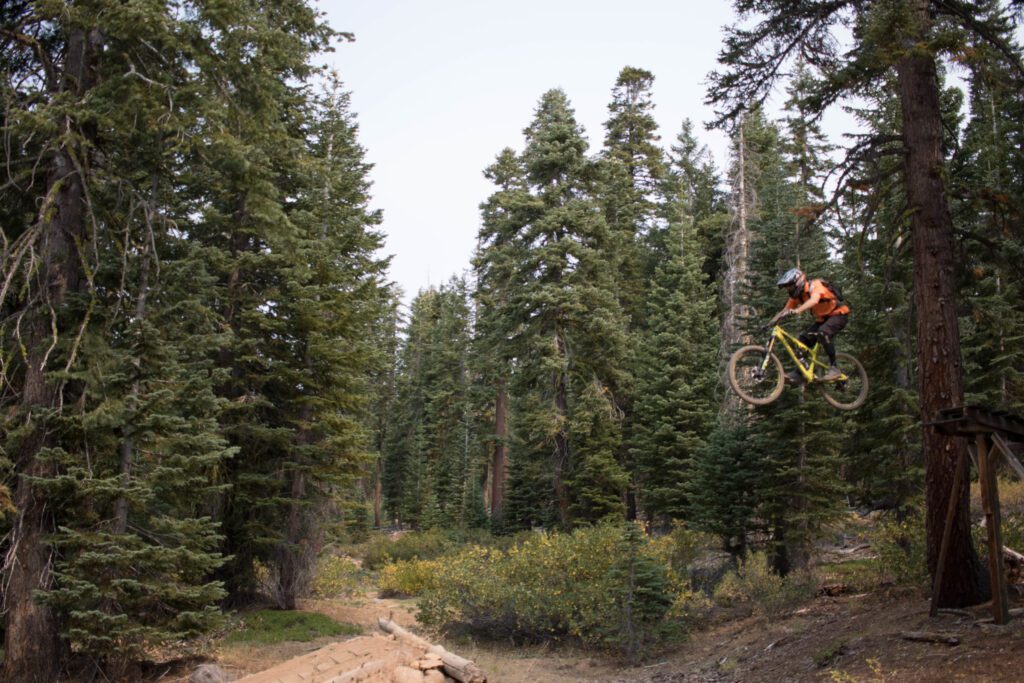


The start of a mountain bike adventure can be both exciting and daunting, especially when you encounter rough and difficult terrain. But with diligence and practice, you can learn the basics and gain the confidence you need to tackle the toughest trails. Here’s how:
- Skill Development:
Start with basic mountain biking skills like body position, braking, and cornering. Practice these techniques in a controlled environment before you go.
- Progressive Difficulty:
Gradually increase the difficulty of the path you are on. Start with easier routes and gradually progress to more difficult terrain as your skills improve.
- Ride with Experienced Riders:
Join an experienced motorcyclist or biker who can provide valuable tips and advice. Observing his methods and following his instructions can boost your confidence.
- Set Goals:
Set achievable goals for each ride, like completing a specific technical section or completing a challenging hike. Celebrate your successes, no matter how small.
- Visualization:
Visualize how you completed a difficult section before trying it. Positive visualization can help reduce anxiety and build self-confidence.
- Learn from your mistakes:
Use mistakes as learning opportunities. Analyze what went wrong and use this information to improve your skills and decision-making.
- Path reading exercise:
Read the road in front of you to anticipate obstacles and choose the best path. Being proactive will increase your confidence and give you a smoother ride.
- Fitness:
Improve your overall fitness to meet the physical demands of mountain biking. Make strength and cardiovascular training part of your daily routine.
- Stay mentally in the moment:
As you drive, focus on the present moment. Don’t get stuck on past failures and worry about future problems.
- Celebrate Progress:
Celebrate your progress and growth as a cyclist. Think about how far you’ve come and what obstacles you’ve overcome.
Remember that confidence comes with time and experience. Take part in the learning process, enjoy every success, and believe in your abilities. Once you’ve mastered the basics and gained confidence, you’ll be well on your way to overcoming the toughest terrain with ease and fully enjoying the exciting world of mountain biking.
So get ready, go with determination, and enjoy the adventure that awaits you!
Related: Are mountain bikes harder to pedal
Choosing Your Trail: Understanding the Different Types of Mountain Biking
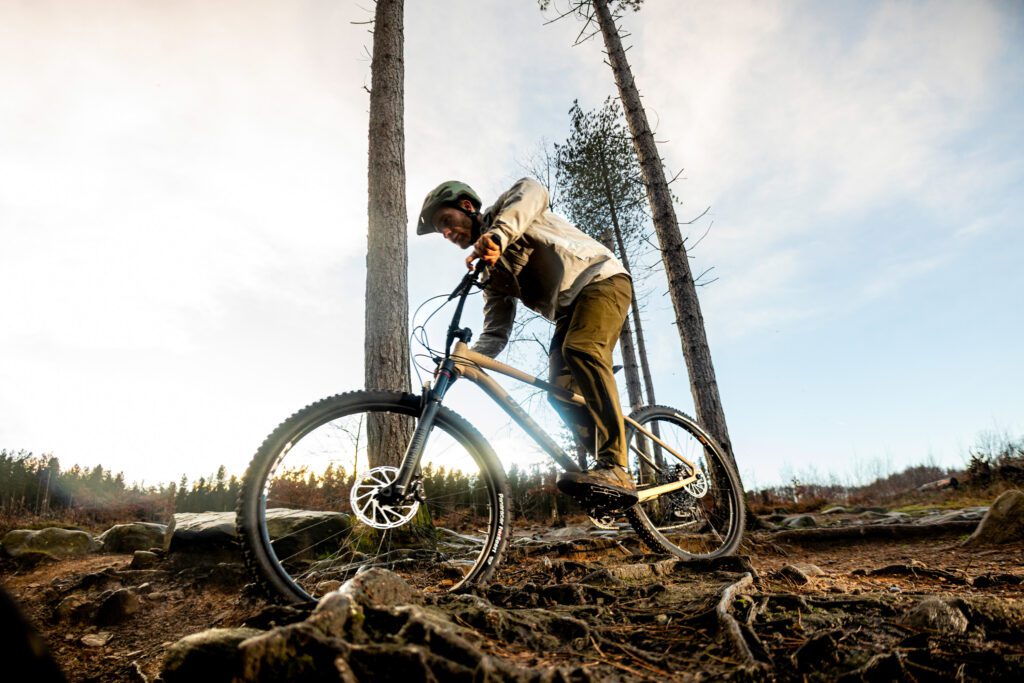


Mountain biking offers a variety of trails, each designed for different skill levels and riding preferences. Understanding the different types of mountain bike trails, from smooth solo trails to technical descents, will help you find the perfect adventure for your skill set. Let’s explore various mountain bike routes:
- Cross-country trails:
These trails are known for testing endurance and walking long distances over a variety of terrain. Cross-country trails typically include technical climbs, descents, and sections, making them ideal for riders looking for a balanced challenge.
- Downhill Course:
As the name suggests, a fast downhill, technical course. The track includes steep descents, jumps, and obstacles that require advanced driving skills and protective gear.
- Enduro trails:
Combining elements of trails and descents, enduro trails emphasize synchronous descents with ascents and asynchronous straights. Enduro racing is gaining popularity around the world due to its exciting and competitive format.
- Trail Riding:
Trail riding covers a wide variety of cross-countries and specialties. This trail is ideal for intermediate riders who enjoy a varied and fun experience.
- All-Mountain Tracks:
All-Mountain tracks are designed to challenge riders with a variety of ascents, descents, and technical obstacles. This trail requires a good balance of skill and fitness.
- Freeride Track:
Freeride Track focuses on creativity and fun, with features such as jumps, banquets, and falls. This course is perfect for cyclists who want to get some fresh air and push their limits.
- Pump Trail and Skill Park:
Designed to hone your mountain biking skills, the Pump Trail and Skill Park include shoulders, rollers, and jumps for practice and technique.
- Single tracks:
Very popular with mountain bikers, single tracks are narrow trails that wind through forests and offer an experience that is one with nature.
- Bike Park:
The bike park offers a variety of specially designed trails, from beginner-friendly green trails to adrenaline-pumping black diamond trails.
- Adventure path:
Adventure trails for daredevils and pioneers often involve traversing remote and challenging terrain, often with an element of bicycle packing.
Before embarking on a mountain biking adventure, it is very important to know the difficulties and features of the route you will be taking. Always adjust your driving skills and fitness level to suit the track requirements.
Whether you are a beginner looking for a gentle introduction or an experienced rider looking for an adrenaline rush, the world of mountain biking lies ahead. Grab your bike, hit the road, and immerse yourself in true mountain biking fun in all its glory!
Related: Can mountain bike be used on snow
Overcoming Challenges: Strategies for Tackling Obstacles on the Trails
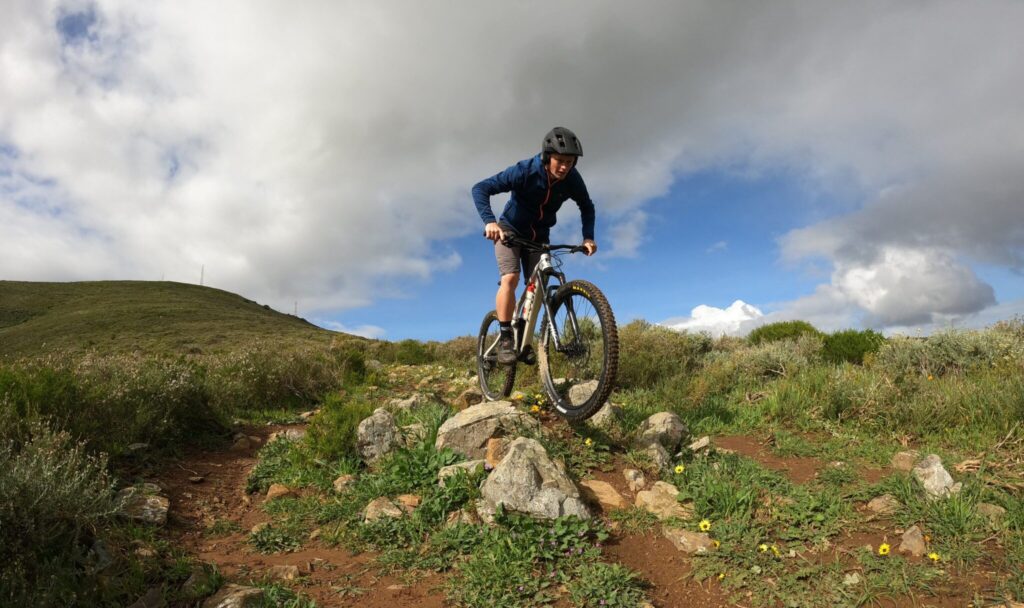


Mountain biking is not just about speed and the excitement of nature; there are also many challenges and obstacles that test the driver’s skill and determination. From steep inclines to technical descents and challenging trails, mountain bikers face countless trail challenges. But don’t worry, these obstacles can be overcome with the right strategy and methods.
Let’s look at some important tips for overcoming the challenges on the trail:
- Maintain the correct body position:
A solid foundation starts with maintaining a good body position on the bike. Bend your knees and elbows slightly, keep your spine neutral, and vary your weight as needed to maintain your balance.
- Look Ahead:
Always look ahead of the road, not directly in front of the bike. This allows you to anticipate obstacles and plan your route accordingly.
- Braking technique:
Mastering the art of braking is essential for controlling speed and surmounting steep slopes. Use a combination of front and rear brakes, paying more attention to the rear brake, to prevent skidding.
- Climbing Technique:
Shift your weight forward to climb uphill, maintain a steady speed, and shift to a lower gear to maintain momentum.
- Cornering Skills:
Approach corners with confidence, tilt your bike around corners, and watch where you want to go to maintain balance and control.
- Step Down Strategy:
On a technical descent, return your weight, lower your seat, and stay comfortable to absorb shock and maintain traction.
- Jumping Obstacles:
Learn to lift the front wheel to dodge obstacles like rocks and roots, and the bunnies will practice jumping over bigger obstacles.
- Path Selection:
Choose the best path on the track to avoid unnecessary obstacles and provide a smoother ride.
- Build Confidence:
Gradually take harder paths and don’t be afraid to push your limits, but always stay in your comfort zone.
- Practice and patience:
Overcoming challenges on the road takes time and practice. Be patient with yourself, celebrate small wins, and keep pushing your limits.
Remember that mountain biking is not just a road, but a path to a destination. Face challenges, learn from experience, and develop the skills you need to overcome the obstacles that come your way. With perseverance and determination, you will soon find yourself tackling the once-eerie trails and experiencing the true joy and satisfaction that mountain biking brings.
So hit the road, join the head-to-head challenge, and let the adventure unfold on the trails.
Read More: How to ride a mountain bike
A Full-Body Workout: Discovering the Physical Demands of Mountain Biking
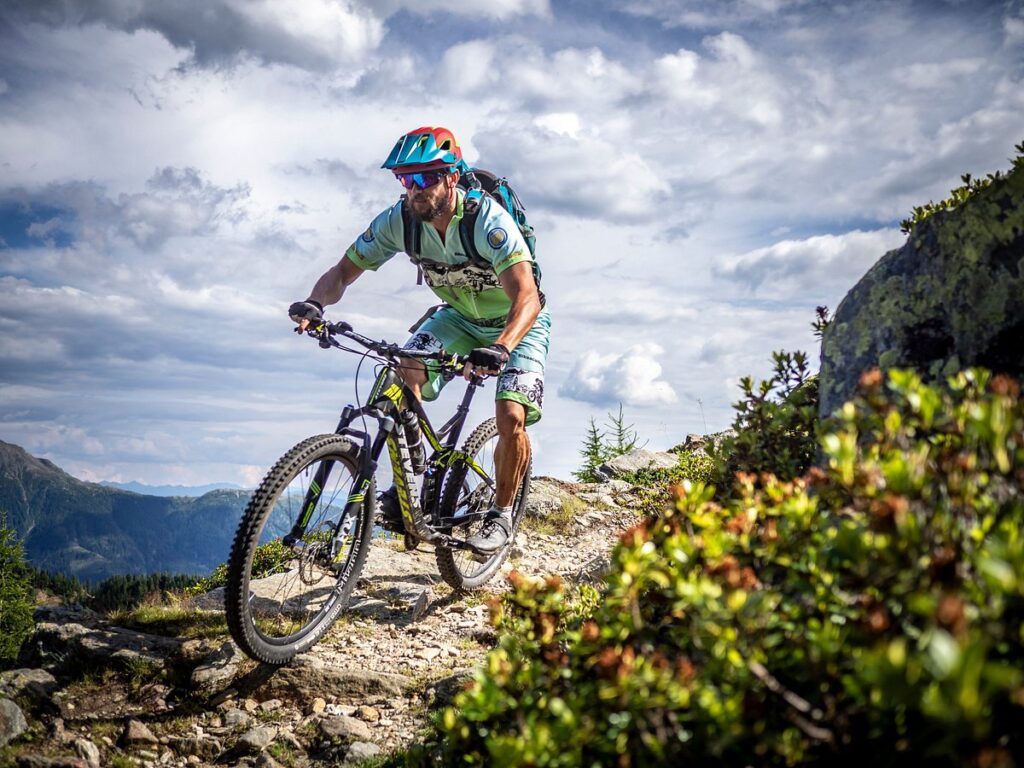


Mountain biking is not just an exciting outdoor adventure; It is also a full-body exercise that has many health benefits. Mountain biking engages many muscle groups, from strengthening rough terrain to climbing tough obstacles, and provides a great cardiovascular workout.
Let’s take a look at the physical demands of mountain biking and find out how they can tone your body and improve your overall fitness:
- Strength and endurance of the legs.
To paddle steep slopes and negotiate uneven trails, you need strong and enduring leg muscles. The quads, hamstrings, and calves work hard as you get through those ups and downs.
- Cardiovascular System:
Mountain biking makes your heart beat faster and improves blood flow, which promotes heart health. Regular cycling can improve your stamina and overall endurance by strengthening your heart and lungs.
- Core Balance:
Maintaining balance and control on uneven ground requires the core muscles to work. Your abs and lower back work in harmony to stabilize your body and support your movements.
- Upper Body Strength:
While your legs do most of the work, your upper body is far from idle. Leading, maneuvering, and overcoming obstacles effectively engage these muscle groups, working the arms, shoulders, and upper back.
- Improved balance and coordination:
Passing through rocks, roots, and difficult paths, you improve your balance and coordination. You will become more mobile and adapt better to your body movements by developing better proprioception.
- Burning fat:
Mountain biking is a great way to burn calories and excess fat. A single session of cycling can burn hundreds of calories, making it an effective weight management tool.
- Joint health:
Unlike high-impact activities, mountain biking is more gentle on your joints and is still a challenging workout. It may improve joint flexibility and reduce the risk of certain joint-related conditions.
- Mental Health Benefits:
The adrenaline rush, connection to nature, and sense of accomplishment after a hike can lift your spirits and reduce stress levels.
- Low-Impact Workouts:
Mountain biking is generally low effort, making it suitable for people of all fitness levels and ages.
- Outdoor Recreation:
In addition to the physical benefits, mountain biking provides an opportunity to explore beautiful landscapes, connect with nature, and enjoy the mental rejuvenation that comes from being outdoors.
Whether you’re an experienced cyclist or a beginner, mountain biking offers a comprehensive and rewarding workout that combines adventure with a deep understanding of nature. So grab your bike, hit the road, and embark on a journey that will change your body and enrich your soul.
Related: Is mountain biking a good workout
Mental Resilience on the Bike: Building Confidence and Focus



Mountain biking is not just about physical strength and skill; it also requires mental stability and unwavering concentration. Your mindset plays an important role in how you enjoy your journey as you navigate rough terrain, overcome obstacles, and develop your abilities.
Let’s look at the importance of endurance in cycling and find strategies to build confidence and stay focused:
- Accept the Challenge:
Mountain biking is a challenge in itself, but it’s important to see this challenge as an opportunity to improve. Take a journey, celebrate small victories, and see every obstacle as an opportunity to grow.
- Visualization Technique:
Before exiting, imagine yourself successfully navigating a difficult section. Positive visualization can increase your self-confidence and reduce your anxiety.
- Awareness and Presence:
Stay in the moment and focus on the road ahead. Awareness helps you react quickly to a changing landscape and avoids distractions.
- Mindfulness and positive:
Pay attention to your inner dialogue. Replace self-doubt and negative thoughts with positive affirmations. Reward yourself in the tough parts and stay determined.
- Manage fear:
Fear is a natural part of mountain biking, but it shouldn’t paralyze you. Learn to deal with fear by accepting it and gradually expanding your limits.
- Set realistic goals:
Set achievable goals for each trip. Setting and achieving small goals can increase your sense of accomplishment and your self-confidence.
- Learn from your mistakes:
Mistakes happen and there are no problems. Analyze what’s wrong, learn from it, and use that experience to improve your skills.
- Travel with positive friends:
Surround yourself with positive and supportive drivers. Sharing experiences and advice with like-minded people can boost your confidence and motivation.
- Breathing and relaxation:
Focus and balance your breathing during intense exercise. Deep breathing and relaxation techniques will help you stay calm under stress.
- Gratitude and Enjoyment:
Think about why you started mountain biking. Enjoy the journey, appreciate the beauty of nature, and be grateful for the opportunity to practice this exciting sport.
The development of mental resilience is an ongoing process and it is natural to encounter difficulties in this process. With determination and practice, you can develop the confidence and focus you need to excel in cycling and truly enjoy the exciting world of mountain biking.
So get ready, overcome your mental barriers, and go on your way with a strong and stable mindset.
Read More: Is mountain biking good for beginners
Conclusion:
Mountain biking is challenging, but it’s the exhilarating and demanding nature of it that makes it so rewarding. While we’ve covered the physical and mental aspects of this exciting sport, it’s clear that mountain biking requires dedication, resilience, and a willingness to get out of your comfort zone.
Overcoming adversity is the key to growth as a cyclist. From tackling rugged terrain to mastering technical skills, every obstacle you overcome adds a sense of accomplishment and confidence. Visualizing success, staying in the moment, and maintaining a positive mindset can go a long way in boosting your confidence and performance on track.
Remember that mountain biking isn’t perfect; It’s about progress. Be patient with yourself and leave room for mistakes and learning. Ride with supportive friends, get advice from experienced cyclists, and enjoy the friendship of the mountain biking community.
So, is mountain biking hard? Yes, but that’s the beauty of it! Accept the challenge, believe in your abilities, and allow yourself to grow. With passion, practice, and unwavering passion, you’ll find joy and fulfillment in negotiating every twist and turn of the road.
Let the thrill of mountain biking fuel your resolve as you discover a world of adventure and success on two wheels. Happy riding!
FAQs:
Why is it so hard to ride a mountain bike?
Riding a mountain bike can be challenging due to rough terrains, obstacles, and steep climbs. It requires skill, balance, and physical effort to navigate through varying conditions effectively.
Why is mountain biking uphill so hard?
Mountain biking uphill is demanding due to the steep inclines, which require significant leg strength and cardiovascular endurance. It also challenges balance and control on rough terrain.
Is mountain biking hard on the knees?
Mountain biking can be hard on knees due to the repetitive pedaling motion and impact on uneven terrain. Proper bike fit and technique can help reduce strain.
What age is best for mountain biking?
Mountain biking is suitable for adults and teenagers who are physically fit and have developed the necessary coordination and skills. Age recommendations may vary based on individual abilities.
Does mountain biking take skill?
Yes, mountain biking requires skill in handling the bike, navigating various terrains, and mastering techniques like cornering, braking, and riding over obstacles.



Welcome to Bikegenics, where passion meets performance! We are a leading online destination for all things related to mountain biking, dedicated to providing you with top-notch gear, expert advice, and an immersive community to fuel your two-wheeled adventures. With a commitment to excellence and a deep love for the sport, we strive to elevate your biking experience to new heights.
